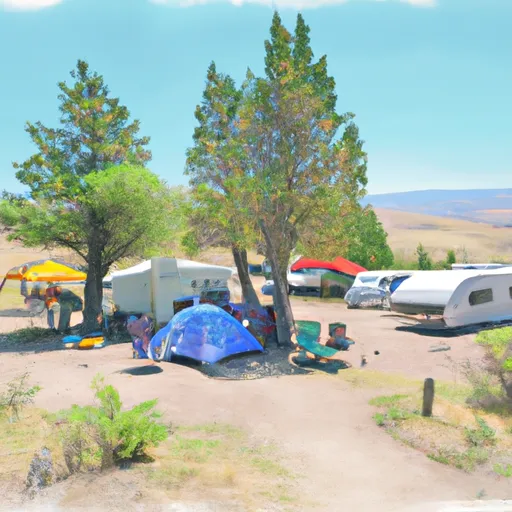Summary
Nestled in the heart of the Warm Springs Indian Reservation, this site features various attractions and highlights that make it a must-visit destination.
One of the main reasons to visit Warm Springs State Recreation Site is its natural hot springs. These geothermal springs have attracted visitors for centuries due to their therapeutic qualities. The mineral-rich waters are believed to have healing properties and provide a relaxing experience. Visitors can soak in the hot springs and enjoy the serene surroundings, making it an ideal spot for rest and rejuvenation.
In addition to the hot springs, the recreation site offers opportunities for outdoor activities and exploration. The Deschutes River, which runs through the area, provides excellent fishing opportunities, particularly for trout. Anglers can try their luck and enjoy the tranquility of the river.
The Warm Springs Museum, situated near the recreation site, is another notable point of interest. The museum showcases the history, culture, and traditions of the Warm Springs Tribe, providing visitors with an educational and insightful experience.
An interesting fact about the Warm Springs State Recreation Site is that it is located on the Warm Springs Indian Reservation, home to the Confederated Tribes of Warm Springs. The reservation covers over 1,000 square miles and is shared by three Native American tribes. Exploring the reservation allows visitors to learn about the rich cultural heritage of the Warm Springs people.
The best time of year to visit Warm Springs State Recreation Site is during the spring, summer, or fall seasons, as the weather is generally mild and conducive to outdoor activities. Spring and fall offer pleasant temperatures, while summer provides warmer weather for swimming, hiking, and picnicking. It is advisable to check the weather conditions and confirm accessibility to the hot springs before planning a visit.
To ensure accuracy, it is recommended to verify the information provided by consulting multiple independent sources such as official park websites, travel guides, and local tourism authorities.
Weather Forecast
Park & Land Designation Reference
Large protected natural areas managed by the federal government to preserve significant landscapes, ecosystems, and cultural resources; recreation is allowed but conservation is the priority.
State Park
Public natural or recreational areas managed by a state government, typically smaller than national parks and focused on regional natural features, recreation, and education.
Local Park
Community-level parks managed by cities or counties, emphasizing recreation, playgrounds, sports, and green space close to populated areas.
Wilderness Area
The highest level of land protection in the U.S.; designated areas where nature is left essentially untouched, with no roads, structures, or motorized access permitted.
National Recreation Area
Areas set aside primarily for outdoor recreation (boating, hiking, fishing), often around reservoirs, rivers, or scenic landscapes; may allow more development.
National Conservation Area (BLM)
BLM-managed areas with special ecological, cultural, or scientific value; more protection than typical BLM land but less strict than Wilderness Areas.
State Forest
State-managed forests focused on habitat, watershed, recreation, and sustainable timber harvest.
National Forest
Federally managed lands focused on multiple use—recreation, wildlife habitat, watershed protection, and resource extraction (like timber)—unlike the stricter protections of national parks.
Wilderness
A protected area set aside to conserve specific resources—such as wildlife, habitats, or scientific features—with regulations varying widely depending on the managing agency and purpose.
Bureau of Land Management (BLM) Land
Vast federal lands managed for mixed use—recreation, grazing, mining, conservation—with fewer restrictions than national parks or forests.
Related References
Area Campgrounds
| Location | Reservations | Toilets |
|---|---|---|
 D97.38R
D97.38R
|
||
 D97.73R
D97.73R
|
||
 Mecca Flat Campground
Mecca Flat Campground
|
||
 Mecca Flat Group Use Site
Mecca Flat Group Use Site
|
||
 D95.20R
D95.20R
|
||
 D95.15R
D95.15R
|
